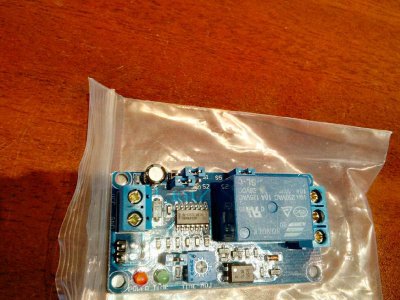To use that circuit board you bought, I
think you will need 12V constant. It should be easy to use 12V constant for two things though.
Anyhow, it's difficult (for me) to determine the operation of that circuit board. Maybe the two header pins next to the VCC-GND terminals are the coil of the relay? Maybe the relay operates with VCC-GND? If you apply 12V to the VCC-GND terminal, you should hear the relay click. If you then remove it, does the relay click off immediately or does it stay on for some time? Sorry I'm not being more helpful, but there's not a lot of info on your board.
Also, it looks from other similar boards on eBay that jumper S5 supplies VCC to the center of the relay, so you wouldn't need to connect anything to the center of the relay. But I would test that.
Regarding my suggestion to use a capacitor, I did a quick search and it turns out that the capacitor would need to be enormous, so it's not a good solution. Better is to use a capacitor to hold on a transistor. Look at the response
here. (Though you still need constant power for those; it just wouldn't be used once the relay is switched off.)


